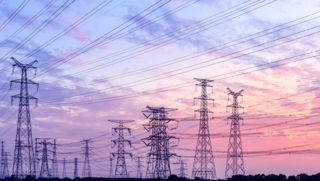PUBLIC INVOLVEMENT IN PLANNING ELECTRICITY GRIDS

The energy transition is advancing at full speed in the electricity sector. An important prerequisite for this is the expansion of electricity grids. This is because renewable energy installations tend to be built at some distance from the major centres of consumption. Most wind turbines, for example, are being erected in the north of Germany on the coast and offshore, where the wind is the strongest and most consistent. The greatest demand for electricity, however, is in the south and west of Germany, where most of the industrial centres are located. There is a political consensus in Germany about the need to expand the grids as a result of the energy transition, and this need is anchored in legislation. At present, 119 projects at ultra-high voltage level are planned: some 14.002 km of grid in total (as at 30 June 2023). According to the Federal Network Agency (Bundesnetzagentur, BNetzA), 2.586 km were completed by mid-2023 and a further 1.178 km have been approved or are under construction. Around 10.238 km are awaiting or undergoing approval procedures. Further projects will be needed on the way towards a climate neutral energy system. Without public acceptance, it is not possible to realise such a large-scale project. For this reason, Germany has adopted a highly transparent process with early and proactive public participation in its long-term Network Development Planning.
Public participation at all planning stages
The planning procedures include five steps, from the scenario framework to the planning approval. The projects to expand the grid become more detailed at each stage of the process. They start with an analysis of the future need. Where precisely the new routes will pass through the country is only decided in subsequent stages. The statutory process requires for the public to be informed and actively involved throughout. In order to speed up grid expansion, the Federal Government has adapted the Grid Expansion Acceleration Act several times in recent years. It has been clarified by law that the projects to expand the electricity transmission grid are necessary for reasons of overriding public interest and in the interest of public safety.
IN BRIEF
How does the grid planning process work in Germany?
The starting point is the scenario framework, which the transmission system operators prepare every two years. This contains forecasts for the development of electricity generation and consumption, and has to be approved by the supervisory authority – the Federal Network Agency (Bundesnetzagentur). The grid operators use these scenarios to draw up the Network Development Plan with expansion measures, containing the start and end points routes. Public input on general issues and potential environmental impacts is encouraged. Simultaneously, the Federal Network Agency is developing so-called preference areas for new direct current projects that cannot be bundled with already planned routes in the 2037/2045 Network Development Plan. These areas replace route corridor determination in Federal Sectoral Planning. The plan’s measures are reviewed and confirmed by the Federal Network Agency then adopted into the Federal Requirements Plan by the Bundestag. Specific route corridors and alternatives are proposed by grid operators and made available for public discussion. The route is ultimately determined by the relevant regional authority, unless the powerline crosses state or international borders, in which case the Federal Network Agency takes the lead.
How can the public get involved?
The Federal Network Agency and the transmission system operators involve the relevant stakeholders and the public by organising consultation procedures and dialogue sessions. Anyone who is personally affected, for example, because they live close to a planned powerline, can also participate in the subsequent planning process. Citizens are then given access to the planning documents, and can explain their objections in person. Public participation, however, extends beyond what is required by law. Information can be found on the website www.netzausbau.de and in specific information offices in many regions.
What is the aim of the process?
The aim is to find routes with the least possible impact on people and the environment and can be implemented as quickly, straightforwardly and cost-effectively as possible. Ultimately, there should be a broad consensus.